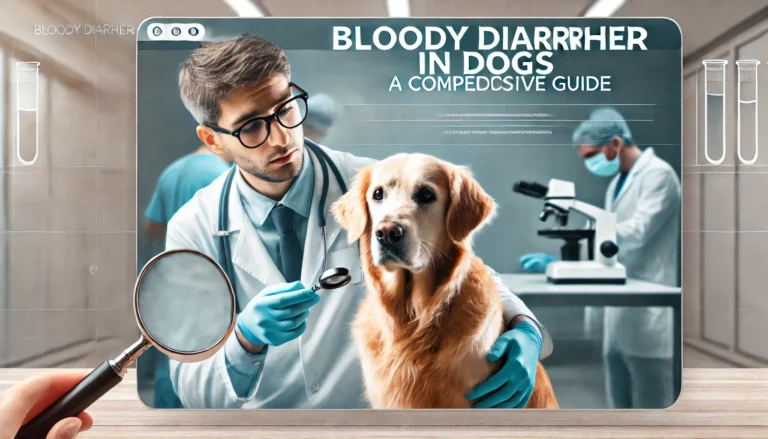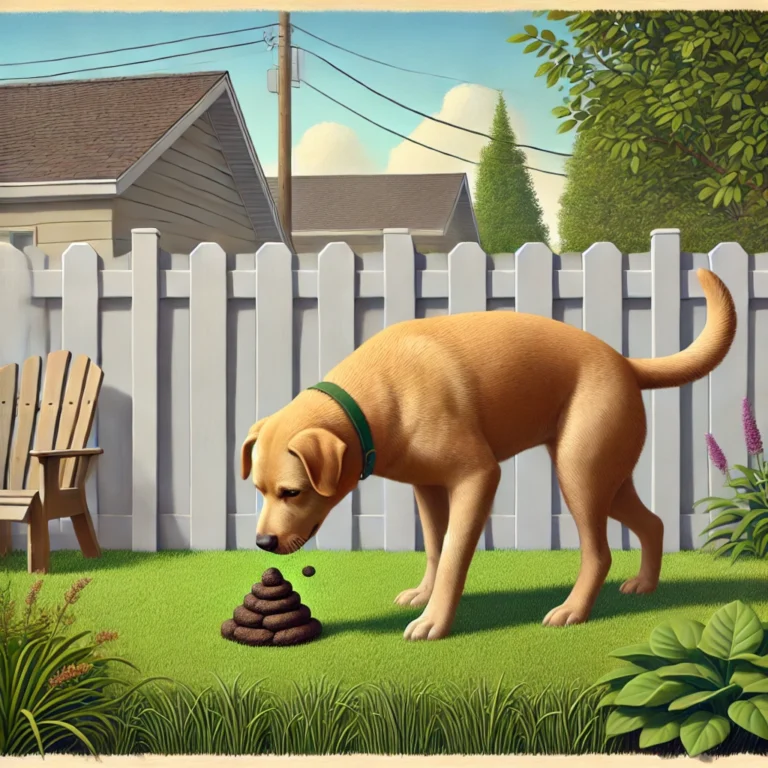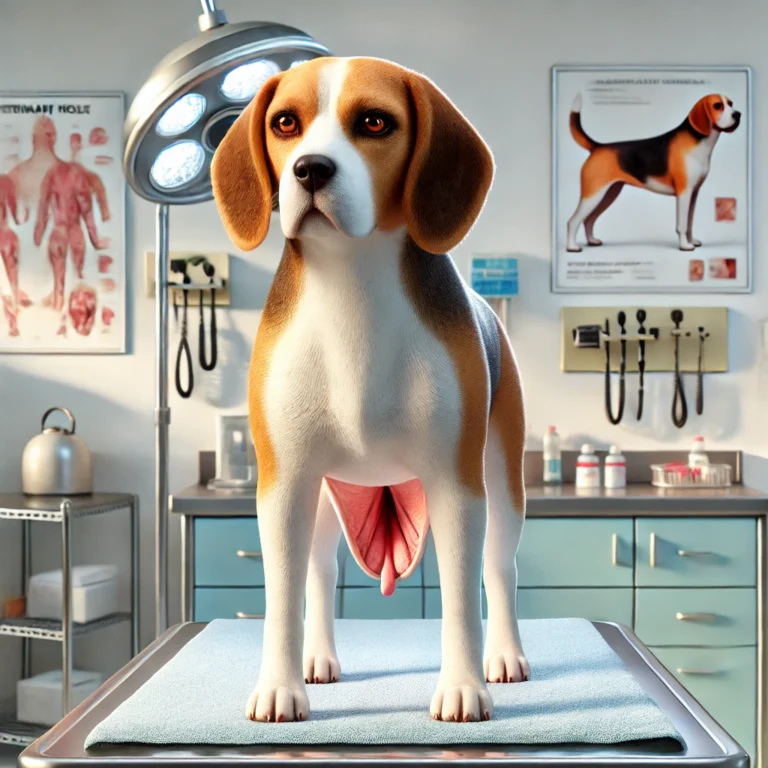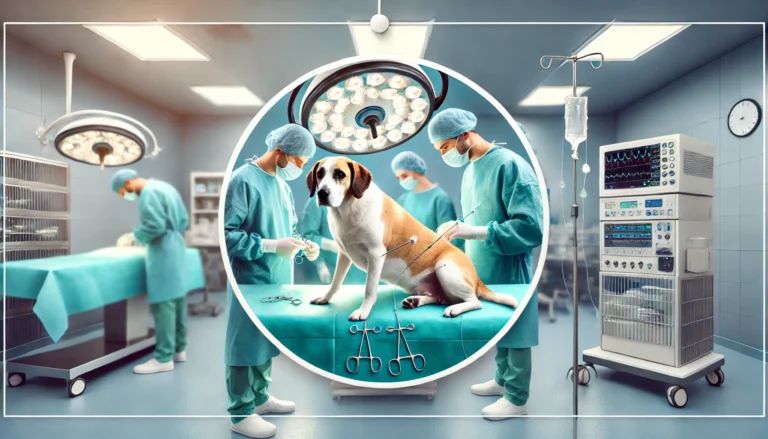red eyes in dogs

Red eyes in dogs seems to be a growing problem in dogs. When you see your dog giving you the ‘dog side eye’ with a look of discomfort, or notice any redness, it’s a sign something could be amiss. Understanding what causes these symptoms can help you respond effectively to your dog’s needs. Let’s explore the common causes, serious conditions, and essential care tips for managing red eyes in dogs.

types of red eyes in dogs
Below is a brief yet comprehensive note on different types of red eyes in dogs, each accompanied by an illustrative image to help visualize the condition.
1. Conjunctivitis (Pink Eye)
Conjunctivitis in dogs is an inflammation of the conjunctiva, the moist tissue covering the front part of the eye and the insides of the eyelids. It can cause the eye to appear pink or red, with possible discharge and swelling.

2. Allergic Reactions
Allergies can cause the eyes to become red, itchy, and watery. This is often due to environmental triggers such as pollen, dust, or certain chemicals found in cleaning products.
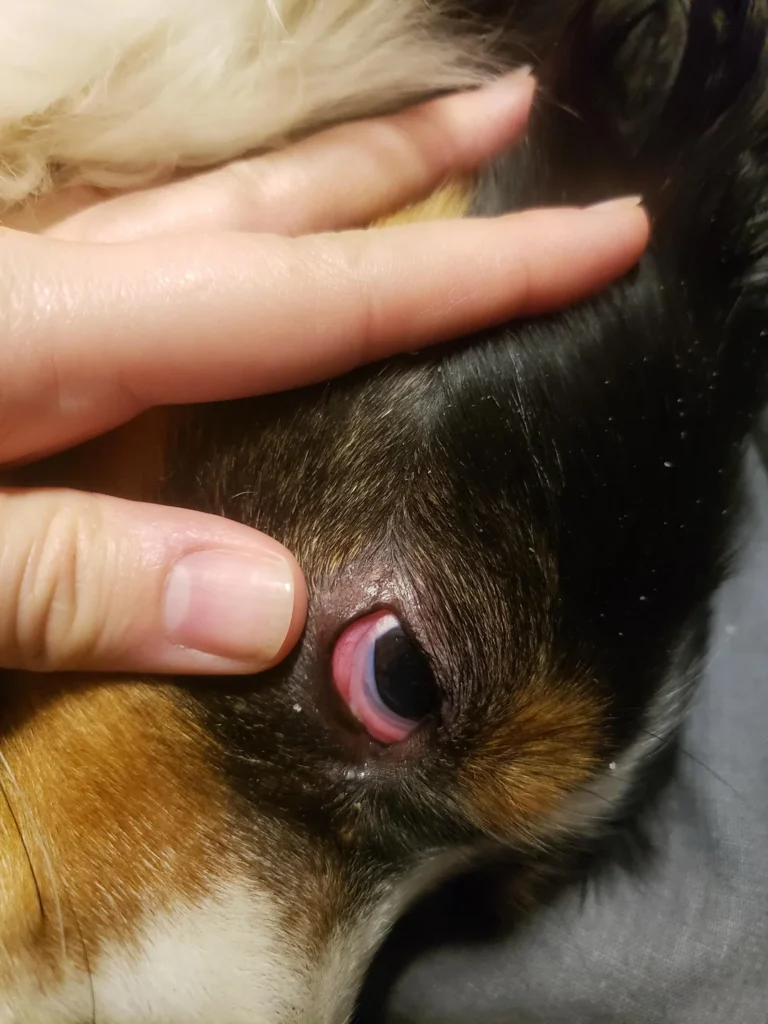
3. Dry Eye (Keratoconjunctivitis Sicca)
This condition occurs when there’s insufficient tear production to keep the eyes moist, leading to dryness, irritation, and redness.
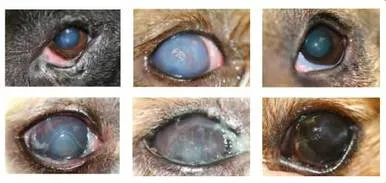
4. Glaucoma
Glaucoma is a serious condition where increased pressure within the eye leads to redness, pain, and potential loss of vision if not treated promptly.

5. Uveitis
Uveitis is the inflammation of the middle layer of the eye, which includes the iris. It can cause redness, pain, light sensitivity, and blurred vision.
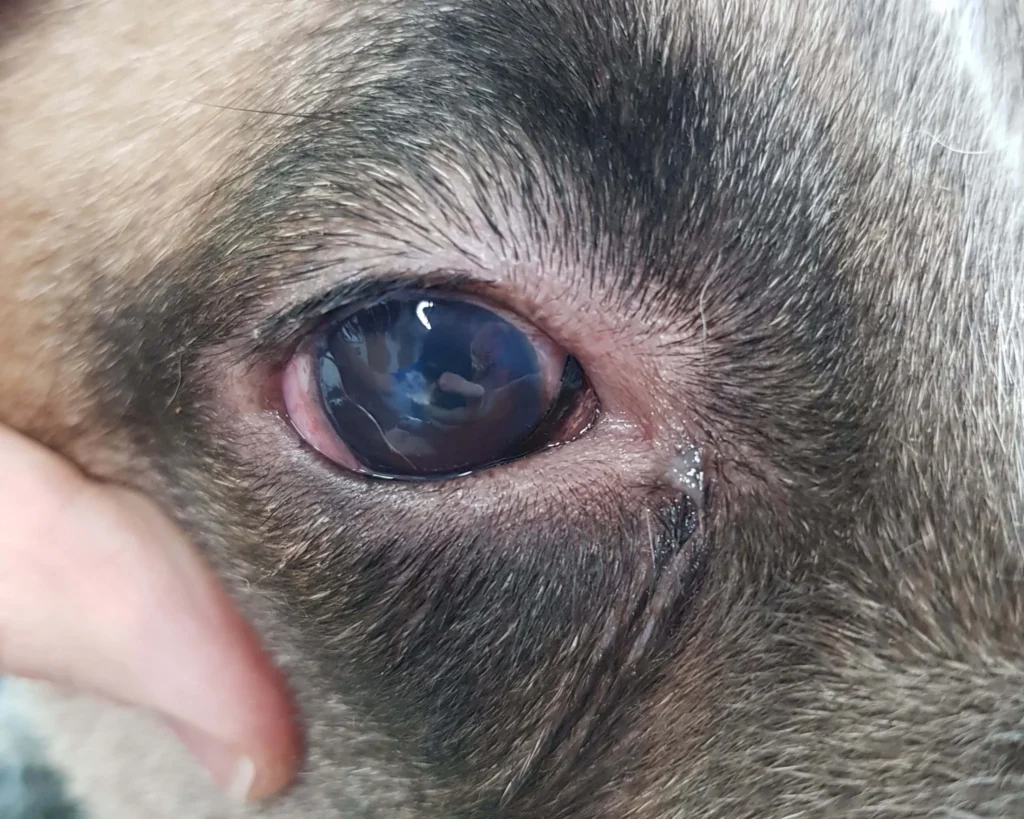
6. Trauma or Injury
Physical injury to the eye, whether from accidents or fights, can lead to redness, swelling, and sometimes bleeding in the eye area.
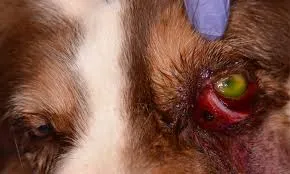
These types cover the common scenarios leading to red eyes in dogs. Each type should be promptly addressed with proper veterinary care to prevent any serious complications and to ensure the well-being of your pet.
Root Causes of Red Eyes in dogs
Environmental Triggers and Allergies: Dogs, much like their owners asking “Why are my eyes red?”, can suffer from allergies. Environmental triggers such as pollen or dust can lead to symptoms like bloodshot eyes or even a more severe scleral injection, where the white of the eye turns red due to expanded blood vessels.
Infections – From Pink Eye to More Serious Concerns: Dogs can indeed get pink eye, or conjunctivitis, leading to red, itchy eyes accompanied by a sticky discharge. If untreated, the infection could worsen, indicated by one side of the eye being red or the entire sclera showing redness.
Trauma and Physical Injuries: An injury could result in a sudden bloodshot eye. Whether it’s a scratch or an impact during play, trauma to the eye often leads to acute redness and swelling. Such incidents might result in red bloodshot eyes or even a painful bloodshot eye that requires immediate veterinary attention.
Advanced Conditions of red eyes in dogs
Glaucoma – A Threat to Vision: This condition can be identified by its symptoms, such as a swollen red eye where the dog may show signs of pain, and the eyeball may appear more prominent. Glaucoma involves significant eye pressure that can damage the optic nerve, leading to blindness if not promptly addressed.
Keratoconjunctivitis Sicca (Dry Eye): This chronic condition is characterized by natural red eyes, where the dog’s tear production is insufficient. This can lead to your dog’s eyes being red and swollen, feeling gritty, and becoming prone to infections.
Uveitis – Internal Eye Inflammation: Uveitis involves inflammation of the uveal tract of the eye, leading to symptoms such as deep red eyes and possible vision impairment. The inner corner of the eye may appear red, and the sclera can become injected, indicating severe irritation.
red eyes in dogs: Symptoms Not to Ignore
Monitoring for any signs of discomfort or abnormal appearance is crucial. These include:
- Redness in one eye without pain or generalized redness across both eyes.
- One bloodshot eye or both eyes appearing bloodshot.
- Discharge, which may range from clear to pus-like, indicating an infection.
- Behavioral changes like pawing at the face or increased blinking.
what to do incase of red eyes in dogs?
First things first, observing red eyes in your dog isn’t something to overlook. This can be a symptom of various issues, ranging from minor irritations to serious health conditions. Red eyes could stem from allergies, infections like conjunctivitis, or more severe ailments such as glaucoma or uveitis.
Initial Steps: What to Do First
Stay Calm and Observe: Your first move should be to calmly assess the situation. Check if there are any other symptoms accompanying the redness, such as discharge, squinting, or your dog pawing at their eyes. This information is crucial for your vet.
Avoid Home Remedies: It’s important not to apply any human eye drops or medications without consulting your vet. These can sometimes worsen the symptoms or be harmful to your dog.
Consulting the Vet: When to Seek Professional Help
Make That Call: If the redness persists for more than a day or if your dog seems to be in discomfort, it’s time to call the vet. Describe the symptoms over the phone, and they will advise whether you should bring your dog in immediately.
Emergency Situations: For symptoms like severe pain, vision loss, or a bulging eye, consider it an emergency and visit the vet immediately. These signs can indicate serious conditions that require prompt treatment.
At the Vet’s Office: What to Expect
Detailed Examination: Your vet will likely conduct a thorough examination which might include checking eye pressure, a fluorescein stain test to check for scratches, and possibly blood tests or X-rays to diagnose the underlying issue.
Treatment Plan: Based on the diagnosis, your vet will prescribe a treatment plan. This may include eye drops, ointments, antibiotics, or in severe cases, surgery. Follow the treatment plan meticulously to ensure the best recovery for your dog.
Prevention Tips: Keeping Those Eyes Healthy
Regular Checks: Make eye health a part of your regular pet care routine. Observe your dog’s eyes regularly for any signs of redness or irritation, especially if they are prone to eye issues.
Environmental Management: Keep your home environment free from irritants like smoke, chemical fumes, and excessive dust. Also, during windy days or when pollen counts are high, try to keep your dog indoors as much as possible.
Protective Gear: If your dog is very active outdoors, consider protective eyewear like dog goggles to shield their eyes from debris and wind.
Proactive Steps and Effective Treatments
Immediate Care: If you notice red under eyes or any redness around the eyes, avoid the urge to treat with human medications and consult a vet for appropriate canine eye care solutions.
Veterinary Intervention: Describing symptoms such as scleral injection or hyphema in dogs to your vet can help in diagnosing the condition accurately. Treatments might include prescription eye drops, antibiotics for infections, or surgery for more severe conditions.
Preventative Measures: Regular veterinary check-ups, maintaining a clean environment, and using protective gear during activities can help prevent injuries and irritants from causing eye issues.
Conclusion: Safeguarding Your Dog’s Vision
Eye health is vital for your dog’s quality of life. Recognizing and responding to symptoms like red eyes, swollen eyes, or an itchy corner of the eye promptly can prevent more severe issues. Knowledge about conditions such as glaucoma, pink eye in dogs, or canine bloodshot eyes is essential for every pet owner.

